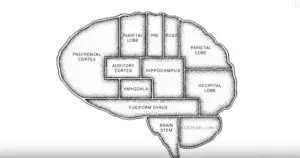Summary
“Mindfulness” takes an insightful approach to an increasingly popular topic with likable effect.
This recap is of The Mind, Explained Season 1 Episode 4, “Mindfulness”. You can read our recap of the previous episode by clicking these words.
The idea of mindfulness is, despite being ancient, somehow quite new to the western consciousness. The Mind, Explained Episode 4 immediately jumps into the rather far-fetched idea of long-time practitioners of meditation being able to control their emotions in a way that “befuddles science”. But how does it work?
There are many different types of meditation, but the variety that pertains to mindfulness hones in on focus and awareness. There’s broad real-life applicability to this; how we understand and react to conflicts and problems determines how we achieve resolutions, as a calm, diplomatic resolution is always preferable to rasher, more emotional one. As if to emphasize the point, The Mind, Explained Episode 4 shows inmates practicing mindfulness techniques in prison.
In another link to previous episodes, the portion of brain activity that is partially controlled by mindfulness techniques is the same part that recalls the past and imagines the future. What’s posited is the idea that the brain is as much as muscle as any other, and muscles can be trained, developed, and strengthened. As we chart the rising popularity of mindfulness in Western culture, including His Holiness the Dalai Lama’s involvement, we start to understand why these practices have found their way into schools and corporate offices.
The secret to the idea of mindfulness, at least insofar as I gleaned one from The Mind, Explained Episode 4, is understanding that there are realities in life that cannot be “fixed”; circumstances that cannot be changed. Mindfulness is not about controlling what happens in one’s life, but conditioning oneself to respond better to those things when they do happen. It’s an optimistic viewpoint. I can get behind it.




